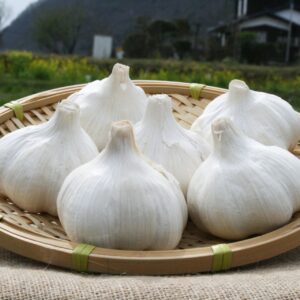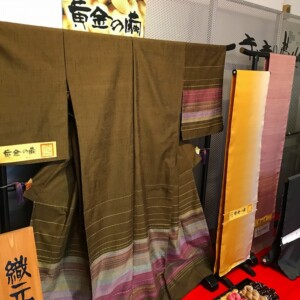
What is Hatahata Sushi? Learn more about how to make it from delicious seasons to how to make it [Akita Prefecture]
table of contents
When you think of delicious fish from Akita Prefecture, you immediately think of Tahata, but is there anyone who thinks that it is not suitable as a souvenir because it does not keep for a long time?
In this article, we will introduce Hatahata Sushi, which is recommended for such people, in detail, from when it is in season to how to make it.
What is Hatahata Sushi?
Hatahata sushi is a type of sushi made by fermenting fish with salt and rice using lactic acid, and has been popular in Akita Prefecture as a New Year's dish and a preserved winter food.

Unlike today, during the Edo period, hatahata sushi was a cheap fish and easily available to the common people, so hatahata sushi can now be eaten throughout Akita Prefecture, and is now passed down as a traditional Akita food.
When pickled whole, it is called ``1-piki-zushi'', when the head is removed and pickled it is called ``maru-zushi'', and when filleted and pickled it is called ``kizushi'', but they are often eaten. It's all sushi.
Reference: Akita, the Land of Beauty Net “Gourmet food and food culture of Akita”
How to make hatahata sushi

We will introduce the steps to make Hatahata sushi in Akita Prefecture.
- wash the dust
- pickle in salt for 3 days
- Soak in vinegar water for 3 days
- Kumazasa, which has antibacterial properties, koji rice, hatahata, carrots, and funori are layered and pickled in that order, and fermented in the refrigerator for about two weeks.
The method of making ``hatahata'' varies slightly depending on the region, such as immediately pickling it in salt, or soaking it in water for a certain period of time to remove slime and blood.
Hatahata sushi has just the right amount of sourness and flavor as a fermented food, and the traditional method of making it has been passed down as one of the cooking methods that brings out the maximum deliciousness of Hatahata.
Hatahata sushi expiration date

Hatahata sushi is made with vinegar, so many people might expect it to have a longer shelf life than regular Hatahata sushi.
First of all, how long does the sushi that is used to make sushi last?
I have summarized the expiration dates for each storage method in this table.
| Preservation method | expiration date |
| Refrigerated storage | 3 days |
| frozen storage | 15 days |
It depends on the season, but if you are not going to eat it right away, it is better to keep it frozen.
The following are guidelines for determining whether or not your ora is hurting.
- Slimy comes out
- My stomach is getting softer
- It smells fishy.
- Discolored to black
If you're thinking of making your own sushi, it's important to pickle it while it's still as fresh as possible.
Also, what is the expiration date of commercially available Hatahata sushi?
I would like to introduce an excerpt.
| Product name | expiration date |
| Miura Yonetaro Shoten Sandfish cut sushi | Refrigerated for 14 days, frozen for 3 months |
| Miura Yonetaro Shoten Hatahata Sushi with Iburigakko | Refrigerated for 14 days, frozen for 3 months |
| Miura Yonetaro Shoten Single sushi with roe sandfish | Refrigerated for 14 days, frozen for 3 months |
| Suzuki Fisheries Co., Ltd. Hatahata Kirizushi | Can be frozen, but please eat as soon as possible as it is raw. |
| Suzuki Suisan Co., Ltd. Hatahata One Animal Sushi | Can be frozen, but please eat as soon as possible as it is raw. |
| Suzuki Fisheries Co., Ltd. Buriko Hatahata Sushi | Freeze for 3 months, 7 days after thawing |
| Hiyori-kai's Hatahata Sushi | Shelf life is 1 year if unopened and frozen, and within 2 months if refrigerated after opening. |
| Mitaka Suisan Hatahata Sushi Co., Ltd. | Store frozen for 90 days from the date of manufacture, and within 5 days after thawing. |
The expiry date of commercially available Hatahata sushi seems to vary depending on the manufacturer, but it can be kept frozen for about 3 months.
summary
Hatahata sushi is a type of sushi made by fermenting fish with salt and rice using lactic acid, and it has been found that it has been popular in Akita Prefecture since ancient times as a New Year's dish and a preserved winter food.
If you keep it frozen, it has a relatively long shelf life and is delicious as a snack with sake, so be sure to give it a try as a souvenir when you visit Akita.


![Hot springs gush out in a place where there are no volcanoes! "Yuzawa Geopark" where you can see the mystery of the earth up close [Akita Prefecture] 4550228_m](https://jp.neft.asia/wp-content/uploads/2023/02/4550228_m-150x150.jpg)
![The popular game "Matagi" started in Kitaakita City! [Akita Prefecture] matagi](https://jp.neft.asia/wp-content/uploads/2024/04/matagi-150x150.jpg)
![Yurihonjo City, where Honjo, Kameda and Yajima domains were intersected between the Kubota and Shonai domains [Akita Prefecture] FF2C8AAA4350E7E179F97F97B38B3A2302F-1](https://jp.neft.asia/wp-content/uploads/2024/04/ff2c8aaa4350e7e179f97f38b3a2302f-1-150x150.jpg)
![Why do Nama balds take knives to tempt people - Oga Peninsula and the Legend of the Demon (1) [Akita Prefecture] New Year's Eve Event 001 @OGA City](https://jp.neft.asia/wp-content/uploads/2024/10/00bf8a32651033edd1191ba2d04c6f61-150x150.jpg)
![Akita Cedar, which has been close to people's lives since ancient times, is a close look at the reasons and secrets [Akita Prefecture] Ninfu Mizusawa Cedar Rare Population Protection Forest (Noshiro City, Akita Prefecture)_Travel Tohoku](https://jp.neft.asia/wp-content/uploads/2025/05/792bcbe7d9fd514753f4deeaca3de33f-150x150.jpg)
![The submerged forests of Lake Akiogi can only be seen from May to June! A mysterious sight with trees floating in the lake [Akita Prefecture] Submerged forest of Lake Akifan](https://jp.neft.asia/wp-content/uploads/2023/07/IMG_5033-150x150.jpg)
![[Chokaisan and Tobishima Geopark: Yurihonjo Edition] A strata from when Japan was the Eurasian continent can be seen B5C46A18BC0CC0CC0E9AD08084EAA5B](https://jp.neft.asia/wp-content/uploads/2024/04/b5c46a18bc0cc79de0e9ad08084eaa5b-150x150.jpg)
![Is Nama bald real? Traces of demons remaining throughout the Oga Peninsula - Oga Peninsula and the Legend of Demons (2) [Akita Prefecture] 1. Namahage Shiba Lighting Festival](https://jp.neft.asia/wp-content/uploads/2024/09/1076350e647a6476081bad8cd4fd6159-150x150.jpg)











